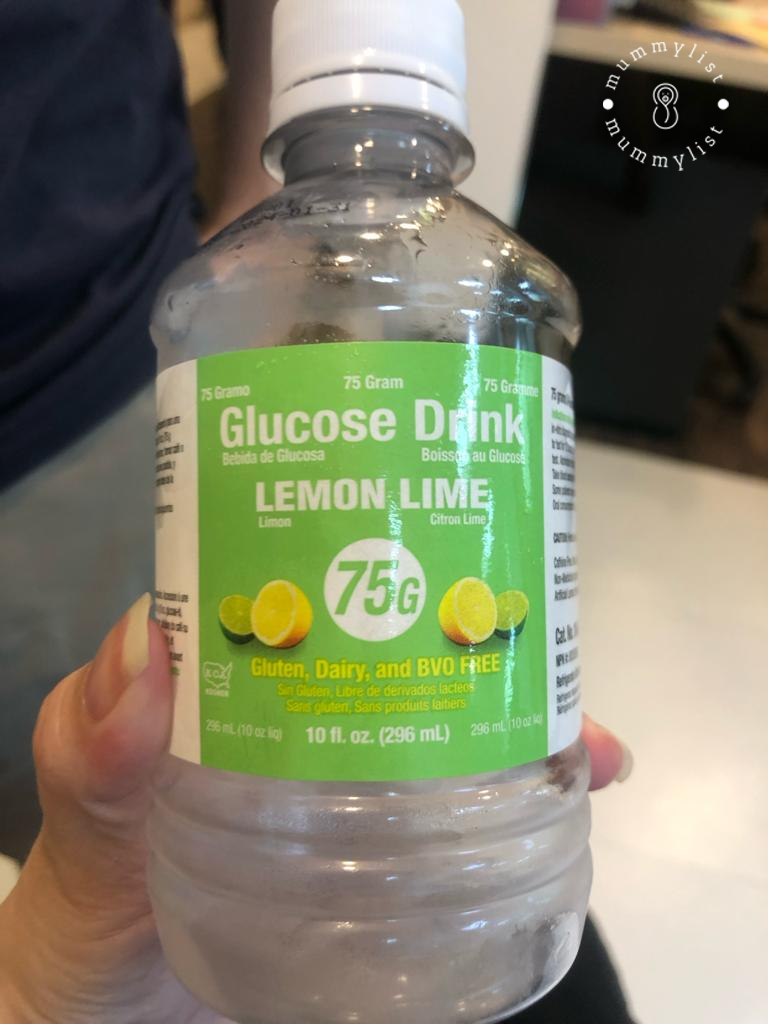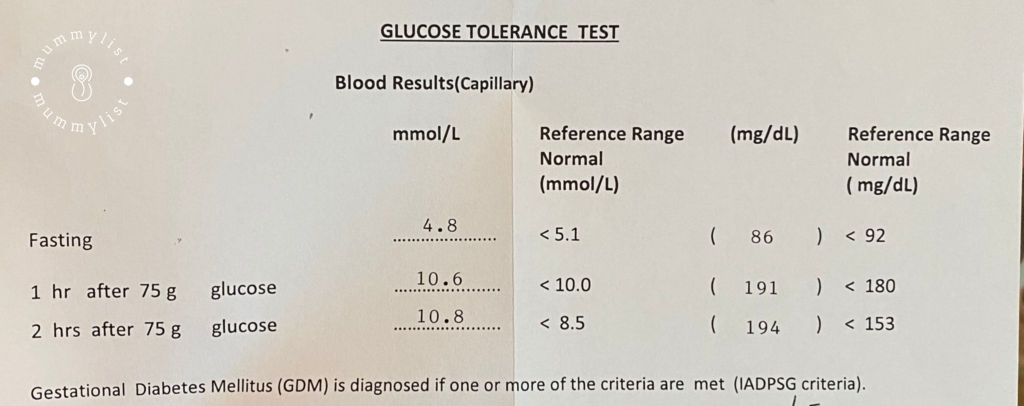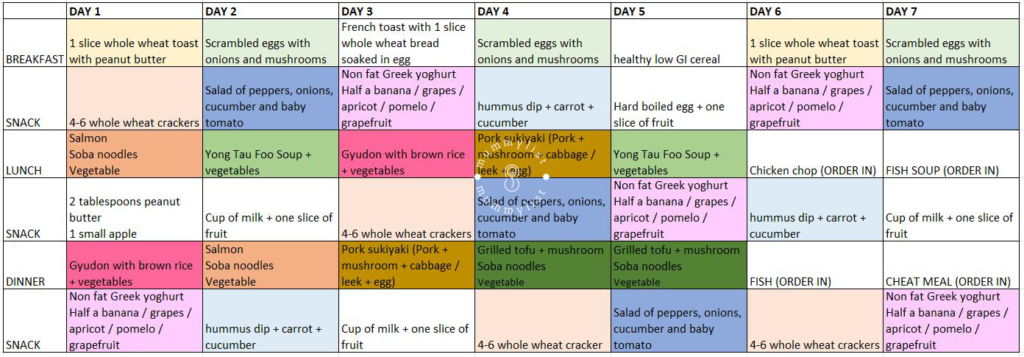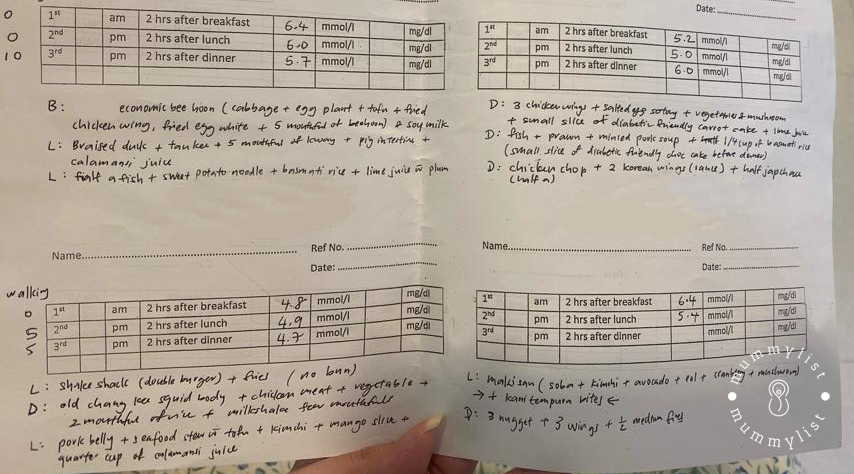The content on our parenting website is provided for informational purposes only. It is not a substitute for professional advice and should not be construed as such. We strive to provide accurate and up-to-date information, but the ever-evolving nature of parenting and healthcare may necessitate changes. By using our website, you agree to the terms of this disclaimer. For more details please go to our Disclaimer Page.
In this chapter of my pregnancy journal, I’ll be recounting my experience with Gestational Diabetes (GDM) and my struggle with food. Join me as I share insights into my gestational diabetes diet that became an integral part in my last trimester of pregnancy.
What is Gestational Diabetes Mellitus (GDM)?
For the uninitiated, gestational diabetes is a unique type of diabetes that develops during pregnancy. It occurs when the body can’t produce enough insulin to meet the extra needs during pregnancy. This leads to elevated blood sugar levels and hence diabetes.
Here’s a simple breakdown on how it can affect both the mother and the baby:
| Consequences for Mother | Consequences for Baby |
| Increased Risk of Type 2 Diabetes: Women who had gestational diabetes have a higher risk of developing type 2 diabetes later in life. Potential Complications During Pregnancy: Gestational diabetes can increase the risk of certain complications during pregnancy, such as high blood pressure and the need for a caesarean section (C-section). Risk of Future Gestational Diabetes: If you had gestational diabetes in one pregnancy, there is an increased risk of experiencing it in future pregnancies. | Macrosomia (Large Birth Weight): Babies born to mothers with gestational diabetes may grow larger than usual, increasing the risk of complications during delivery. Low Blood Sugar: After birth, the baby may experience low blood sugar levels, especially if the mother’s blood sugar was not well-controlled during pregnancy. Respiratory Distress Syndrome: Babies born to mothers with gestational diabetes may have an increased risk of respiratory distress syndrome, which can affect their breathing. Risk of Type 2 Diabetes: Babies born to mothers with gestational diabetes may have a higher risk of developing type 2 diabetes later in life |
The good news? With proper management, it often can be controlled and after childbirth, blood sugar levels usually return to normal. Monitoring diet, exercise, and sometimes medication are common approaches to keep blood sugar levels in a healthy range during pregnancy.
Being Diagnosed With GDM
Ever since I got pregnant, the worry about being diagnosed with GDM was constantly at the back of my head. Statistics showing that 1 in 5 pregnant women in Singapore being affected by gestational diabetes did not help.

At week 27, I finally went down to my clinic to do the dreaded oral glucose tolerance test (OGTT). I had to fast since the night before, since the test required to take a fasting glucose level. After which, I had to finish a bottle of glucose drink within 5 minutes and wait around for 2 hours. Thankfully it did not taste as bad as what many other ladies had shared with me before. At the 1 hour and 2 hour mark a blood prick was done to check blood glucose levels.
My Shitty GDM Results
As you can see from the results sheet below, my blood test results were far from ideal. Not only did my blood sugar levels not go down enough, it even went up after the 2 hour mark.

While my doctor noted that such results are not ideal, he assured me that in many cases it can be controlled with a proper diet.
As a foodie, whose emotions are entirely dictated by the food I eat, this was yet another devastating moment in my tumultuous pregnancy. Read article: “My Amniocentesis Experience in Singapore“. After shedding tears at having to endure yet another difficult trimester, I started my journey of portion control and diet control.
My Gestational Diabetes Diet
To ensure both our well-being, I could only steel my will to keep to a controlled diet until the end of my pregnancy. 11 more weeks!
Once I got home from my doctor’s appointment I quickly set down to create a meal plan for the week. Because what I normally ate is carbohydrate heavy and hence definitely not suitable for my condition then. As a result, here’s what I came up with and stuck to for the initial few weeks.
My GD Diet For the First Month: Strict Healthy Diet

From a normal carb-heavy diet (think hokkien mee, chicken rice, sushi etc.), I changed my diet 360. Improvements that made the difference included:
- Healthy carbs like soba, basmati rice, low GI bread
- Heavier portions of protein instead of carbs
- Keto alternatives for snacks like cookies and ice cream
- Smaller and more frequently meals
- Walking for 10-15mins immediately after meal to help with managing blood sugar levels
With the help of this gestational diabetes diet, I managed to keep my blood sugar levels within acceptable levels under 6.6 mmol/l. I used the Freestyle Optium Neo glucose monitor for home tracking as that was what my gynae’s clinic used. Thankfully it was easy enough to use.
What really sucked was the pricking of my fingers 2 hours every meal for a few days each week. Hence when I found what worked for me, I tend to stick to that.
Hot tip: BBQ and hotpot meals were what helped keep me sane during this period. I simply avoided carbs and sauces and it did not cause any spikes for me.
My GD Diet For The Second Month: More Exploration
After a month, sticking to a super healthy and controlled diet starting becoming weary for me. My mood took a major hit, and I felt constantly depressed at being unable to enjoy my food.
In fact, it was extremely normal for me to start breaking down in tears close to meal times because I was tired of eating the same things. This led me and my husband to start exploring more food options.
Here are some of my more interesting meals aside from fish soup that did not spike my blood sugar too much:
- veggie starter + laksa yong tau foo (no noodles) – 5.4 mmol/l
- curry fish head + vegetables + half a bowl of basmati rice – 6.0 mmol/l
- shake shack burger (only half a bun) and small ice cream – 6.5 mmol/l
- grilled seabass, grilled octopus, seafood stew, salad with dip – 6.7 mmol/l
- veggie starter + homecooked oyakdon (half a bowl of basmati rice) – 6.6 mmol/l
- chicken chop + prawn noodle soup (with veggies) + coconut shake from liho – 5.6 mmol/l
- pork bulgogi + beef soy bean paste soup + kimchi + japchae (1/4 serving) – 6.0 mmol/l
What I realized worked for me was to stick with safe carb options (in small portions) and explore more protein wise. Something else I discovered that worked really well was to start my meal with vegetables first, followed by protein and then carbs. This was extremely effective in helping to keep the blood sugar levels within control.
My GD Diet In The Final Month of Pregnancy: My Happiest Month!
After two months of good results, I became braver in my food choices (see below)! Surprisingly because of my strict control in the initial 2 months, it seemed like my body became more acclimatized to breaking down sugar. The result? I was able to slowly increase carb portions without too much impact on my blood sugar levels.
Even though my doctor said it was alright to reduce my frequency of testing post meal, I continued to check for my own personal assurance up until my scheduled C-section.

Final Thoughts on My Gestational Diabetes Journey
The last trimester was definitely a difficult one to get through because of the GD diagnosis. But I was lucky that it was manageable with the help of a diet.
Hopefully my examples of what I ate can help you find an incorporate a bigger variety of yummy food to keep your spirits up!






